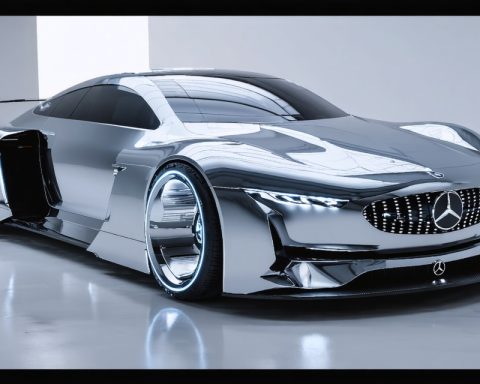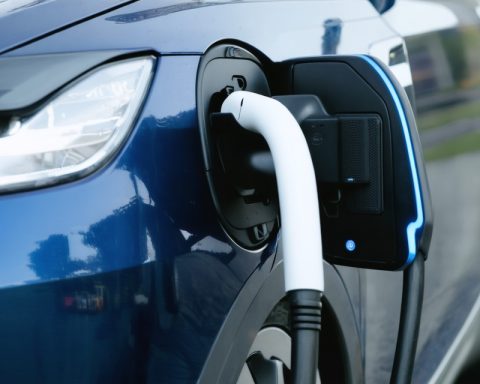- Solid-state batteries promise to enhance electric vehicle (EV) performance with faster charging, longer life, and increased safety.
- Unlike traditional lithium-ion batteries, they use a solid electrolyte, offering higher energy density and reducing fire risks.
- Major companies, including Toyota and QuantumScape, are investing heavily in solid-state research, with anticipated market introduction by the mid-2020s.
- These batteries could make rapid EV charging as common as visiting a coffee shop, revolutionizing convenience and accessibility.
- While manufacturing challenges and costs remain, ongoing investments suggest that these obstacles will be overcome, potentially lowering production costs.
- Accelerated adoption of EVs, benefiting from solid-state technology, could lead to reduced urban pollution and a more stable electric grid.
- The transition to solid-state batteries signifies a groundbreaking shift toward more efficient, sustainable, and high-performance EVs.
Beneath the sleek exterior of electric vehicles (EVs), a quiet revolution is brewing. Picture a battery that charges in minutes, lasts for days, and is less prone to overheating. Enter the realm of solid-state batteries—a technology poised to redefine our understanding of EV performance.
Imagine the thrill of driving an EV from New York to Washington, D.C., with a single, rapid charge. This vision is on the horizon, driven by the relentless innovation in battery technology. Traditional lithium-ion batteries, while efficient, have limitations in energy density and safety risks due to their liquid electrolytes. In contrast, solid-state batteries use a solid electrolyte, which can significantly enhance power storage and delivery while reducing fire hazards.

The energy landscape shifts as companies like Toyota and QuantumScape pour resources into solid-state research. Toyota plans to introduce its first vehicles equipped with this technology by the mid-2020s, promising to cut charging times to a fraction of the current duration. Meanwhile, QuantumScape claims its solid-state batteries offer energy densities over 50% higher than today’s best lithium-ion efforts.
Envision a bustling world with charging stations as ubiquitous as coffee shops, where recharging an EV is as intuitive as grabbing your morning brew. Solid-state batteries could transform this notion into reality by facilitating faster, more efficient power transfer.
However, the journey to commercialization isn’t merely a walk in the park. Manufacturing challenges and high production costs present formidable hurdles. Yet, the investment flow suggests optimism. As these batteries become more feasible for mass production, their costs are expected to plummet, making them accessible to a broader audience.
Consider the ripple effects: urban pollution could diminish as EV adoption rises, bolstered by these advanced batteries’ capabilities. Furthermore, the electric grid might stabilize with more reliable, lighter, and longer-lasting storage options.
What does this mean for you, the potential EV driver? With solid-state batteries, the future holds the promise of EVs that are safer, faster, and more efficient, taking you further at a lower cost. As these technologies crystallize from concept to reality, they are likely to spark a surge in EV popularity, pushing the boundaries of what’s possible on the road.
In conclusion, the anticipation of solid-state batteries compels us to rethink today’s limitations. Every innovation hurdle cleared brings us closer to a world where your electric ride is not just an environmentally friendly choice but also an unmatched powerhouse of performance. This seismic shift in EV technology isn’t merely about driving; it’s about driving change, steering society toward a sustainable horizon powered by the boundless energy of human ingenuity.
Revolutionizing Road Trips: The Promise of Solid-State Batteries in EVs
Unlocking the Future of Electric Mobility: Solid-State Batteries Explained
The evolution of electric vehicles (EVs) is undergoing a potential transformation with the advent of solid-state batteries. These advanced batteries aim to resolve many challenges faced by the current lithium-ion technology, paving the way for faster charging, greater range, and enhanced safety in EVs.
How Solid-State Batteries Work:
1. Structure and Composition:
– Solid-state batteries employ a solid electrolyte instead of the liquid or gel-based electrolytes found in traditional lithium-ion batteries. This change reduces the risk of leaks and enhances stability.
2. Improved Energy Density:
– Solid-state batteries can achieve energy densities around 50% higher than current lithium-ion batteries. This equates to longer driving ranges and more efficient energy use ([QuantumScape](https://www.quantumscape.com)).
3. Enhanced Safety:
– The absence of liquid electrolytes minimizes the risk of fires and explosions, a critical safety enhancement for EVs.
Real-World Use Cases and Advantages:
1. Rapid Charging:
– These batteries could potentially reduce charging times from hours to mere minutes, transforming EV recharging into a routine task akin to filling up with gasoline.
2. Environmental Impact:
– Solid-state batteries promise lower environmental footprints by improving the efficiency of raw material usage and enabling lighter, longer-lasting storage solutions.
3. Industry Trends:
– Giants like Toyota are leading the charge toward incorporating solid-state batteries into their production vehicles by the mid-2020s ([Toyota](https://www.toyota.com)).
Pressing Questions & Answers:
– What are the limitations of solid-state batteries?
– Despite their promise, challenges such as high production costs, scalability issues, and material availability still need to be addressed before widespread adoption.
– How soon can we expect solid-state batteries in EVs?
– While various companies are vying for leadership in this space, most experts anticipate a more prominent rollout around the mid to late 2020s.
Pros and Cons Overview:
Pros:
– Higher energy efficiency.
– Rapid charging times.
– Enhanced safety and stability.
– Longer lifespan compared to current batteries.
Cons:
– Currently expensive to produce.
– Still in development stages with limited availability.
– Technical hurdles in scaling production.
Actionable Recommendations:
– EV Consumers: Stay informed about developments in solid-state battery technology as it might soon offer a more efficient and safer choice.
– Investors: Consider opportunities in companies investing in solid-state battery tech development, as the field is ripe with growth potential.
– Policy Makers: Encourage funding and research in this transformative tech to expedite commercialization efforts.
By keeping an eye on these advancements, stakeholders can stay ahead in what promises to be a dynamic shift in the automotive world. Unveiling the potential of solid-state batteries could make EVs not just the cleaner choice, but the smarter one too.
For further information on EV advancements and to keep track of future trends, visit the following resources: [QuantumScape](https://www.quantumscape.com), [Toyota](https://www.toyota.com).















